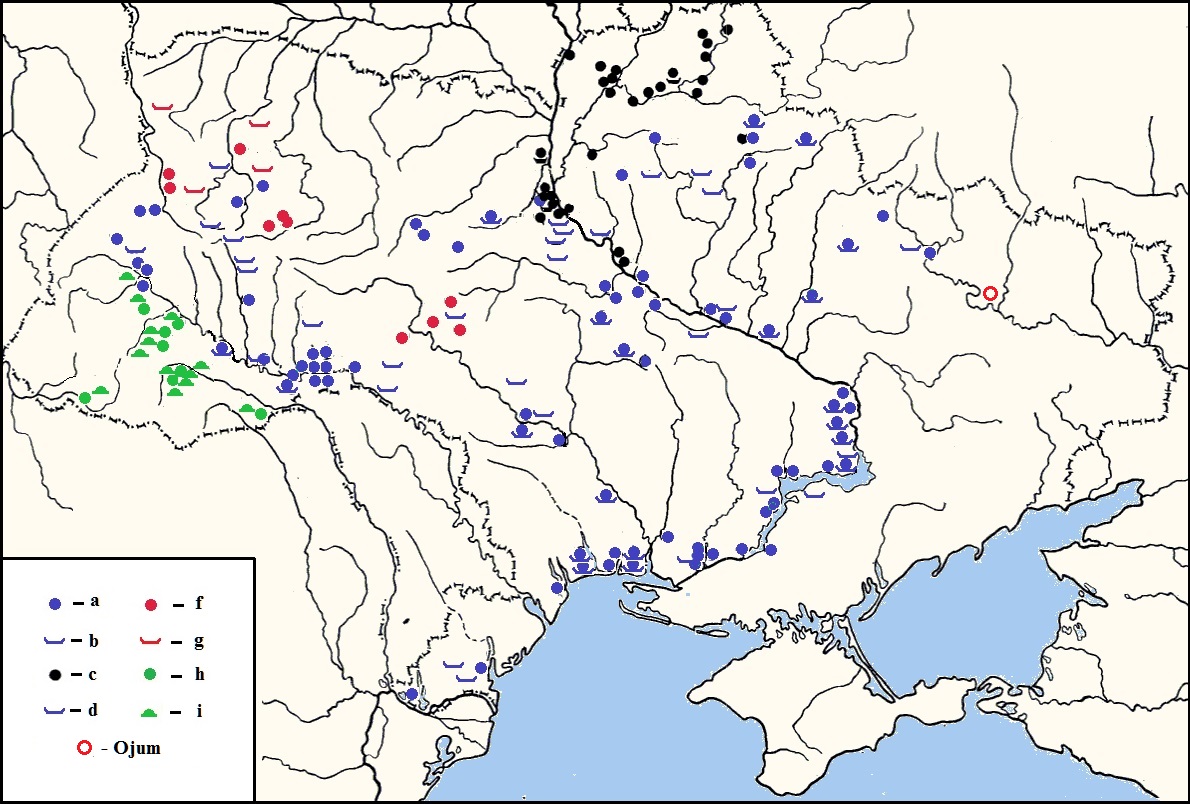Scythia: The Interpretation of the Data of Ancient Historians.
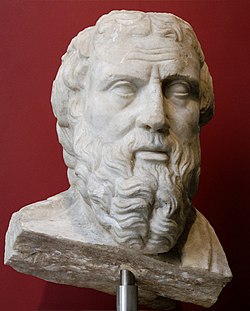
Ancient historians have left us a wealth of material about the Scythians and Scythia, but this material cannot always be relied upon. Firstly, it is influenced by the mentality of those societies among which historians worked. Secondly, it reflects the state of historical science, which was still in its infancy, and the geographical ideas of that time while absent a reliable cartographic base. That only is the assertion of Herodotus that Scythia is an almost regular quadrilateral – which is quite impossible to place on the modern map.
His "History" has an essential feature – he points us to the degree of reliability of the information, something defining it as a myth, something like reality. In some cases, the historian emphasizes: "they say so", in others – this does not express his opinion about the reliability of this or that information, sometimes he recognizes his ignorance (HASANOV ZAUR. 2002: 44-45).
When Herodotus submits the names of gods and men, geographical names or names of tribes, and different realities of those times, it's a concrete material that should be used skillfully. Unfortunately, too often, many scientists 'skillfully' used it in their interest. Now, that we know the ethnic origin of the Scythians, бthe majority of which consisted of Proto-Chuvashes, (see Genesis of Scythian Culture) and their neighbors, this material may not only confirm the heuristic reasoning but also enrich our understanding of that distant period.
We have already explained the names of Scythian gods (see Scythian Mythology), but Scythian place names may also have an explanation using the Chuvash language. For example, the name of the area Exampaios (Eξαμπαiος) between the Borysthenes and Hypanis Rivers may correspond to Chuv. uksăm "wild garlic" and puy "to grow rich". The name of the river Hypakyris (Yπαξυρις) can be translated as "chaff" or something similar (Chuv. kipek "peels" and irěš "bran"). The name of the Gerros River (Γερρος) can be connected with Chuv. kěre "a ford".

Herodotus wrote that in Scythia slaves dug a ditch from the Taurian Mountains to the Meotian Lake (the Sea of Azov) at the point where it is widest. The Azov Upland, a series of hills often with steep slopes (see the photo of Belmak-Mogila on the right), can be taken for the Taurian Mountains.
At right: Belmak-Hill, the highest point of the Azov Upland(324 м.)
По словам Геродота Герр вытекает из Днепра, течет в море и недалеко от него впадает в Гипакирис.
According to Herodotus, the Gerros follows from the Dnieper to the sea, and near it runs in the Kypakyris River. Ancient inhabitants of the Azov Sea coast named the waterway, formed by low currents of the Samara River, the Vovcha, Mokri Yaly, and Kalchyk Rivers, by the Gerros. The Kalchyk runs in the Kalmius River near its mouth. The Kalchik and Mokri Yaly come so nearer to each other in one place that, at rather near historical times, the Zaporozh cossacks drew their boats from one river to another by land. G. de Bauplan described this (BAUPLAN de GUILLAME le VASSEUR, 1998) though wrongly named the Kalchyk the Miuss River.
Closely considering a modern topographical map, one can see that the isthmus, which separates the Mokri Yaly from the small tributary of the Kalchyk, has a distance not more than six kilometers, and both rivers could be connected with a channel so that to form a continuous way from the Sea of Azov up to the Dnieper (See Map 9). The map shows that a narrow valley leaves the river Mokri Yaly, it could be a small river in ancient times. Using this valley, it was possible to facilitate the work of hydraulic engineering, though increasing the length of the channel at the same time. Initially, this could just be a quagmire, which could be waded, and this explains the name of this whole waterway "Gerros" as a ford.
Incidentally, the name of Mokri Yaly River can mean "a waterway," because the Turkic languages have the word jol/joly "way" and Ukr.mokri means “wet”. If we look for Turkic correspondence to the first part of the name, taking words meaning "water", and "wet", we suddenly come to the Kayala River known from the Ipatiev Chronicle. M. Vasmer and K. Menges argued that the correct form of the name is not Kayala but Kayaly (MENGES K.H., 1979: 100). This is exactly how it is written in the chronicle.
M.T. Sokol proposed a decoding of the river's name qaj+jaly as "a river with slippery banks". Menges disputed this explanation because qaj is "only the verbal basis", while the second part of the word was borrowed by the "Southwest" Turkic languages from modern Greek γιαλοσ "a sea-shore, beach" (ibid: 102). If we take Turk. joly, turned into jaly in one of the "a-speaking" dialects, we get an explanation of the name of the Kayala River as "a slippery way". Semantically, it is close to the name of "wet way" if our assumption about the existence of wetlands between the Mokri Yaly and Kalchik is true. Especially if there had been drag-way on the wet areas.
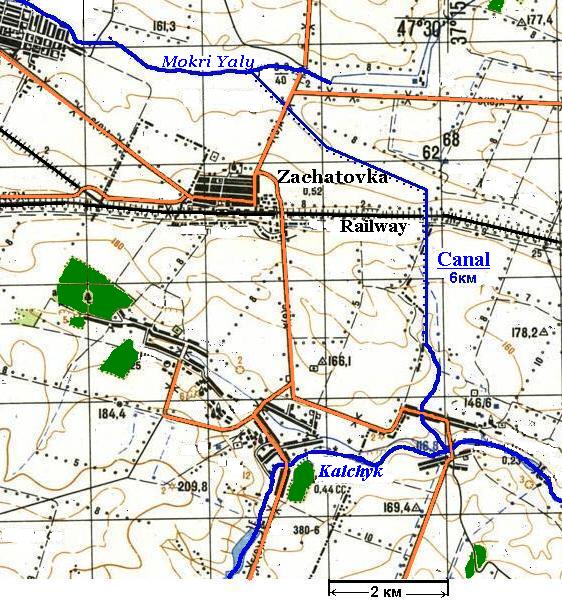
Map 9. The Gerros River – the Waterway from the Dnieper to Azov Sea.
This topic is considered for more detail in a separate article The Gerros – the Ancient Water Way from the Dnieper to the Sea of Azov
Thus the Gerros (Kayaly) was a water route from the Dnieper to the Sea of Azov, and then the Kypakyris can be identified with the Kalmius River. In this case, it turns out that not the Mius River was mentioned by Herodotus. The Kypakyris following his order of enumeration of the Scythian rivers, would have to be west of the Gerros, not east, as follows from our arguments. Many scholars tried to put in order Herodotus’ muddled data but so far no one was able. We should recognize that they are true only partly. The Greek historian mentioned the last the Tanais River which is to be understood, as many have done before, the lower reaches of the Don and the Siversky Donets Rivers.
Herodotus and his informants knew nothing about the true Don because if they knew it then they were certainly aware of the Volga, as they converged in this area very closely and this interesting fact could not be silent on. However, Herodotus said nothing about any powerful waterway which could correspond to the Volga. This river was first mentioned in the 2nd cet. AD by Ptolemy called Ra (MAGIDOVICH I.P., MAGIDOVICH V.I., 1970: 26).
It is very difficult to establish the ethnicity and places of settlement of individual Scythian tribal groups on Herodotus' data. We have already mentioned that a sufficiently large number of Scythian names can be explained by means of Old English. This could be considered an accident if it would not be turned out that even more, indecipherable Sarmatian and Alanian names of Abayev's Onomasticon have Old English interpretations. For a more detailed consideration of this matter, a list of names belonging to the Scythian-Sarmatian time and having a good interpretation by means of the Old English had been compiled on the basis of the assembly of V. Petrov, V. Abayev, J. Harmatta, V. Latyshev, N. Knipovich, and others. There are among these names many belonging to Alans, so the list became the code name "Alano-Anglo-Saxon Onomasticon".
The number of names that can be decrypted using the Old English language is very large although no doubt that some interpretations may be erroneous. This fact may be explained by the fact that the ancient Anglo-Saxons who moved to the left bank of the Dnieper and settled in the basins of the Desna and Seym Rivers remained here until the Scythian time and later moved to the Black Sea. At the same time, the southern and south-eastern boundary of the Urheimat of the Anglo-Saxons was held at the Teteriv River, which separated the ancient Anglo-Saxon settlements from the Thracians. Name of the city of Zhytomyr, we explained as "a border protection" (OE scyttan "to shut, close", mer "a border") but OE scytta had also the sense "a shooter" and by sounding this word is close to the Greek name of the Scythians Σκυθαι. The Scythians were considered to be the best bow shooters and the ancient Greek ethnonym "a Scythian" was considered synonymous with the shooter. In this regard, we can assume that the Greek word for the Scythians may occur from the Old English word meaning "a shooter". Either way, the defensive line of Anglo-Saxons came from Zhytomyr to the Dnieper and then continued along the Sula River. This line was made up of earth ramparts, which are still preserved till now and known as "Zmiywvi" (Serpent Banks). As place names show, the part of the Anglo-Saxons moved to the left bank of the Dnieper, and there defended their territory by a chain of hillforts along the right bank of the Sula River.

Serpent banks. According to a map of Wikipedia.
The neighborhood of the Anglo-Saxons and the Scythians may be confirmed by the interpretation of some Scythian realities by means of Old English. For example, the name of the Scythian short sword akinakes (ακινακεσ), which is probably corresponded to Iranian kynk "a sword", is well explained as “a killing ax” OE æces "an ax" and nǽcan "to kill". The name of the Scythian clothing σακυνδακη was explained by V. Abayev as "the clothes from deer fur" (Os sag "a deer" and the tag/dag "a thread, woven fabric"), which is not entirely correct, as in this case, the question is not the wool, but the skin. Too many deer would need to collect their wool but the Scythians were not engaged in deer herding. Perhaps the second part of the word is OE đescan "to cover", akin to Lat. tŏga "a toga", tĕgĕre "to cover." The first part of a word can be translated as "Sakian", but also as "battle, war" (cf. OE sacu "a strife, war"). Following the peculiarities of the fish, the prefix could mean "without, no”. Such words are present in Germanic languages (eg, Norse an/on). Then the root would have sense "a bone". Maybe Dt tak "a branch" and Ger Zacke "a spike" of unknown etymology can suit as their meaning is close to the sense "a bone". Then the third part of the word may be akin to Ger Hai “a shark," whose origin is hidden somewhere in North Germanic languages, but the proto-form of the word was supposed to be *kai. It is known that sharks are cartilaginous fishes, ie, boneless.
The possibility to decipher the names of the Scythian realities, as well as the names of some tribes by means of Old English seems strange if the Anglo-Saxons, not Scythians, left a large trace in the Scythian vocabulary. It is appropriate to recall Herodotus’ words:
How many the Scythians are I was not able to ascertain precisely, but I heard various reports of the number: for reports say both that they are very many in number and also that they are few, at least as regards the true Scythians (HERODOTUS. 1993: IV, 81.)
Thus, sometimes Herodotus after his informants, could call Scythians also other peoples of the Northern Pontic country. As part of the entire Scythian community, Herodotus identifies four groups. As part of the entire Scythian community, Herodotus identifies four separate groups – the Scythians-farmers, the Scythians-plowmen, the Nomadic Scythians, and the Royal Scythians. These names characterize not ethnicity, but certain socio-economic groups, the definition of the ethnic composition of which is a separate task. You can definitely talk about the Royal Scythians, the top of which was the Anglo-Saxons (see Royal Scythia and its Capital).
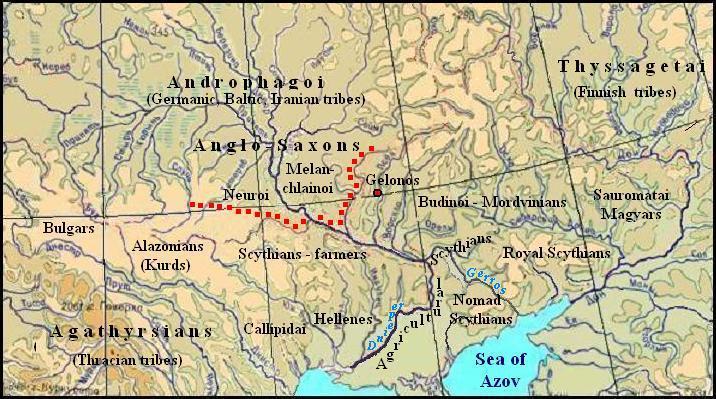
Right: Scythia at Herodotus' time.
Red dots mark the defensive line of Anglo-Saxons, going from Zhytomyr to the Dnieper and continue further along the Sula River. This boundary was composed of earthworks and hillforts that are particularly clearly visible along the right bank of the Sula.
Speaking about the population of Scythia from the Istr River (Danube) and further north, Herodotus indicates that the Scythians are adjacent to the Agathyrsians Neuroi, afterward Androphagoi, and lastly Melanchlaeni. The Agathyrsians can be confidently associated with the Thracians, and the ethnicity of the Neuroi and Melanchlaeni can be judged from their names and other information, as well as from the data we have. The Androphagoi, that is, cannibals, obviously lived far north of the Neuroi, so information about them is of a legendary nature. The Thracians were the neighbors of the Anglo-Saxons, some of whom moved to the left bank of the Dnieper at the late stage of the Trzciniec culture and became the creators of the Sosnitsa culture, which eventually developed into the Lebediv one (XI-VIII centuries BC). Herodotus points out that the Neuroi (gr. Νευροί) left their homeland and settled among the Budinoi (IV, 105) who are connected by many scientists with the ancestors of the Mordovians. OE neowe, niowe means „new”, substantivization of the word could give neower "newcomer". The Anglo-Saxons could not call themselves newcomers, it is logical to assume that such a name could be given to them by local settlers, that is, those Anglo-Saxons who came here earlier during the existence of the Trzсniec culture. This first wave of Anglo-Saxons, judging by the toponymy and distribution of the Eastern Trzcniec sites, occupied the basins of the Seim River and the lower Desna. To the south, along the banks of the Sula and Psel, there were settlements of Mordovians-Moksha, who arrived there from their ancestral home in the upper reaches of the Oka River. The growth in the number of Anglo-Saxons forced them to gradually move through the Sula, Psel, and Vorskla to the upper reaches of the Seversky Donets. They arranged their settlements among the Mordovians, as evidenced by the lexical correspondences between English and the Moksha language. (see the section "The Expansion of the Finno-Ugric Peoples"). Herodotus places the Melanchlaeni (Gr. Μελαγχλαινοι) to the north of the royal Scythians and explains their name as "dressed in black" (Gr. μελασ "black", χλαι̃να "outer clothing").
A number of historians and archaeologists, including B.A. Shramko, B.N. Grakov, A.A. Moruzhenko, B.N. Mozolevsky and A.P. Medvedev, in search of the localization of Melanchlaeni habitats, came to the conclusion that summarized by Yu.V. Buynov so:
… written sources make it possible with a high degree of probability to place the Melanchlaeni of the time of Herodotus on the territory of the modern Kharkiv Region and to associate with them the Seversk-Donetsk group of sites of the Scythian time, which includes 16 settlements, more than 150 settlements and several hundred mounds (BUYNOV Yu.V. 2008: 14).
As for the ethnonym, in fact, has an Old English origin. The ancient Angles had a proper name Mealling, derived from OE. a-meallian "to become insane, reckless" (see HOLTHAUSEN F. 1974: 216), which, together with OE. hleonian "to protect" was used by the newly arrived Anglo-Saxons to name their kindred. One might think that they were especially warlike, and it was they who had to settle among the settlements of the Mordovians and take them under their control. This interpretation is confirmed by the opinion of Buinov, who associates with the Melanchlens the military-aristocratic elite of the population of the forest-steppe part of the Seversky Donets basin, i.e. area located north of Royal Scythia. The reason for such a distinction is a special elite subculture attested by the burial mounds in the Karavan group of the Lyubotinsky burial ground, the Korotychansky, Protopopovsky, Pesochinsky, and Staromerchansky barrows (BUYNOV Yu.V. 2008: 14). Thus, the Neuroi, and Melanchlaeni, and the Royal Scythians are not ethnonyms, but the names of individual social groups of the Anglo-Saxons.
Deciphering the name of the Budinoi using the Old English language confirms their proximity to the Anglo-Saxons. Gr. Βουδινοι, perhaps even "Wudinoi", according to Herodotus, were the inhabitants of the forest country. In this case, OE widu, wudu "wood, forest", Eng. wooden by the meaning and phonetically are suitable perfect. The word wuden was not found in Old English but it could exist and be an adjective von "forest" on the laws of English grammar.
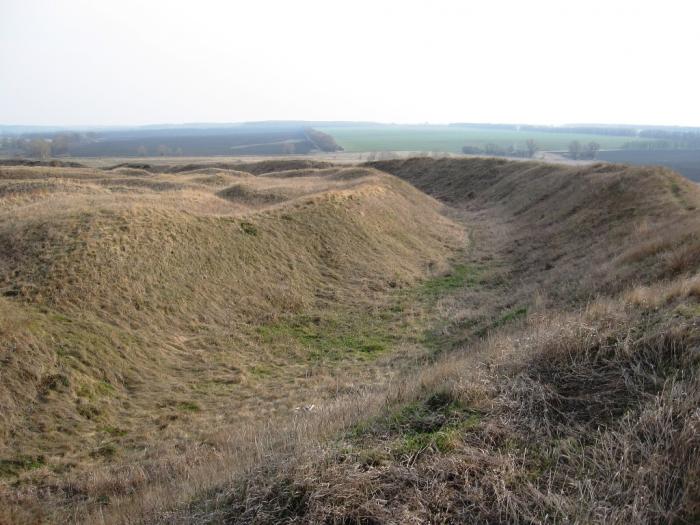
Left: Bilsk hillfort.
Herodotus placed the city of Gelonos in the country of the Bidinoi. Scientists did not come to a consensus about its real place. B.Shramko long argued that the city has to be connected with Bilski Hillfort on the Vorskla River (SHRAMKO B.P. 1987), but V. Il'inskaya refuted this hypothesis. (IL'INSKAYA V.A. 1977: 91-92). Certainly, Shramko is right. Bilsk Hillfort has large dimensions – the total length of ramparts is 33 833 m, their height is now 6 m, and their width is up to 9 m (SHRAMKO B.P. 1987: 25).
A Mordvinic epos about building a great city (MASKAYEV A.I. 1965: 298) confirms Shramko's idea. In addition, Mordvinic place names in the basin of the left tributaries of the Dnieper say to its favor (see. Section "Finno-Ugric Place Names of Ancient Times"). Judging by the toponymy, Mordvinic tribes had to hold the territory of the left bank of the Sula River and basin of the Psel and Vorskla Rivers, ie the north-western part of the area of the Bondarykha culture. This culture, which existed in the interval 1200 – 800 years BC, is connected with its predecessor Maryanivka culture sites which occur on the Desna, Seym, Sula, Vorskla, Seveversky Donets, and Oskol Rivers (BEREZANSKAYA S.S. 1982: 41). The Bondarykha culture goes beyond the border of Maryanivka culture in the area between the Seym and Sula Rivers. The Lebediv culture was spread just here later. As this was already said, was created by the Anglo-Saxons.
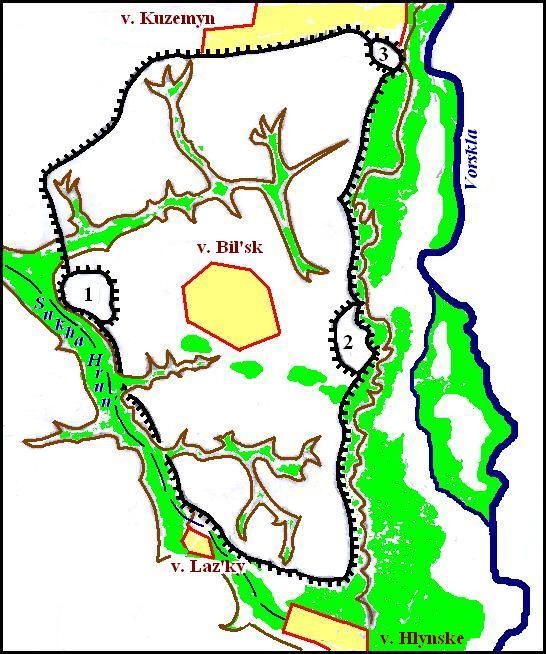
Left: Map of Bils'k hillfort (Gelonos) according to B. Shramko (SHRAMKO B.P. 1987: 24, Fig. 2.)
Number mark
1. Western fortification.
2. Eastern fortification.
3. Kuzemyn fortification.
Oriental ramparts run along steep banks of the Vorskla River, and Western ones- along the dry bed of the Sukha Hrunl River.
The Alazonians may be considered the ancestors of the modern-day Kurds. The analysis of the place names in Western Ukraine has shown that the cluster of names, decrypted using the Kurdish language, lies precisely in those places where Larissa Krushelnytska researched one of the variants of the Chornolis culture (KRUSHELNITSKA L.І., 1998) and where Herodotus placed the Alazonians above the Callipidai, ie where the Tiras (Dniester) and Hypanis (Southern Bug) approach one another (HERODOTUS, IV, 52). Interpretation of the ethnonym "Alazonians" (Αλαζονεσ) is difficult. It can be translated as "born in a shirt" (OE hāla "the afterbirth, placenta", sunu "a son"), another option could also be "colored (red?) people" at Chuv ula (in other Turkic languages ala) "colorful" and çyn "a man". The consonance of the names of Alazons and Amazons attracts attention. The latter can be explained using Chuv. amă “a female, mother” and çyn "a person, man" which allows to explain both names using the means of the Chuvash language. A seductive version of the origin of the ethnonym from PGm aliza "alder", with which it is possible to relate the name of the country Oleshia in the lower reaches of the Dnieper (SHAPOSHNIKOV ALEKSANDR KONSTANTINIVICH. 2007: 44) should be discarded by several reasons. First, Herodotus wrote about the Alazones, not Alizone. Secondly, it is possible to speak confidently about the presence of this restored root in the name of the alder only in the Celtic and Slavic languages, but neither the Celts nor the Slavs were in these places at a Scythian time. And, finally, the Alazons lived quite far from Oleshia.
Here are a few proper names and names of tribes mentioned by Herodotus which can be explained by means of the Old English language:
Αγαθιρσ (agathirs), Αγαθιρσοι (agatirsoi) – according to Herodotus Agathyrsos was a son of Heracles and gave rise to the tribe of the Agathyrsians – OE đyrs (thyrs) "a giant demon, a magician" is well suited for both the name and the ethnonym. For the first part of the name, we find OE ege "fear, terror", and the whole means "terrible giants or demons". However, OE āga "owner", āgan "to have, take, receive, possess" suit phonetically better. Then the ethnonym can be understood as "having giants". Below, we decipher the ethnonym the Thyssagetai (see Θυσσαγεται) as a nation of giants in the north of Scythia. Thus, we can suppose that the Agathyrsians subdued the Thyssagetai
Αναχαρσισ (anaxarsis), the Scythian famous traveler and sage – Anacharsis was not a Scythian. It can be concluded from Herodotus' phrase: "Now the region of the Euxine upon which Dareios was preparing to march has, apart from the Scythian race, the most ignorant nations within it of all lands: for we can neither put forward any nation of those who dwell within the region of Pontus as eminent in ability nor do we know of any man of learning having arisen there, apart from the Scythian nation and Anacharsis" (HERODOTUS, IV, 46 ). Anacharsis was the son of Gnuros, the son of Lycos, the son of Spargapeithes (see Σπαργαπειθησ). All three last names can be decrypted using Old English. Then, an Old English match must also be found for the name Anacharsis: Old Saxon. āno "without", OE hors/hyrs "horse" (ie, "Horseless").
Αριαπειθεσ (ariapeithes), the name of a Scythian king – OE ār „honor, dignity, glory” (ārian "to honor"), fǽtan „to decorate” (“adorned with glory”). The ruler of the Agathyrsians Spargapeites lived at the same time (see Σπαργαπειθησ). He killed Ariapeithes.
Γνυροσ (gnuros), the son of Lykos, the father of Anacharsis – as Shaposhnikov asserts, the name has no features as of Indo-Iranian and Eastern-Iranian origin (SHAPOSHNIKOV A.K. 2005, 39), but cf. OE gnyrran "to grind". Akin Germanic words mean "to roar, growl." These senses do not seem suitable for a name, but derived nouns from these verbs could be the name of a beast. Ukrainian, Belorussian, Russian, Polish words knur, knur mean "a male pig". Moreover, in the same languages, as well as in Slovak and Lusatian, there are words close to the Greek form of the word (Ukr., Rus. knoroz, Blr. knorez, Slk. kurnaz, Pol. kiernoz, Up.-Lus. kundroz – all "male pig"). In the etymological dictionaries of the Ukrainian and Russian languages, explanations of the origin of all these words are considered unsatisfactory, not quite clear, or onomatopoeic (A. VASMER MAX. 1967: 264-265 and A. MELNYCHUK O.S., Ed. 1985: 474) as a corresponding root is absent in the Slavic languages. It can be assumed that in Old English there was the word gnyr "boar, wild boar". It was borrowed by the Slavs in this sense. Thus, the name of the king's grandson could mean "wild boar". Cf. Θυσκεσ. How the Slavic languages have got also the Greek form of the word, is necessary to find out, because such a word is absent in the Greek language. Perhaps, in the language of the Greeks who inhabited Ukraine in Scythian times, it existed, being borrowed from the neighboring Anglo-Saxons.
Θυσσαγεται (thussagetai), the Thyssagetai, one of the folks in Northern Scythia mentioned by Herodotus, or Thyrsagetae (by Valery Flaccus) – The presence of the morpheme getai/ketai (Μασσαγεται, Ματυκεται, Μυργεται) in the names of several tribes is noteworthy. In addition, the Thracian tribes Getae (Γεαται) are known in history. We can suppose that this word means "people". The closest to it is the Chuv kĕtỹ "a flock, herd". Then Thyssagetai were "unruly people" (OE đyssa "rowdy”). See Κρόβυζοι.
Κρόβυζοι (krobuzoi), Thracian tribe mentioned from VI-V centuries. BC by Hecataeus, Herodotus, Strabo, who lived south of the Istra delta (YAYALENKO V.P. 2018, 48-49) – the other name of the Thyssagetai, cf. Chuv. kăra "rowdy", "testy" and puç "head". Yaylenko considers the name as "tough nut to crack" and explains it by means of different languages like "red goats" (ibid). I will refrain from criticizing this explanation. See Θυσσαγεται.
Λικοσ (likos), the son of Spargapeithes – OE. līc „body” could be the name of a man of large build.
Οδατισ (odatis), after the story of Chares of Mytilene (Χάρης ὁ Μυτιληναῖος, the 4th cent. BC) the only daughter of the Scythian king Omart (see. Ομαρτησ) – Chuv. atte "of the father", těs "kin, appearance, face".
Ομαρτησ (omartes), a Scythian king, the father of Odatis (see. Οδατισ) – Chuv. ămărt "eagle".
Παντικάπαιον (Panticapaeon), an ancient Greek city on the place of the city of Kerch, Crimea, Παντικάπης, a river in the Northern Black Sea region – the possibility of the Baltic origin of the name is considered at Old Prus. pintis, pentes "way, path", Lith. kãpas, kãpai "hill, grave" (YAYLENKO V.P. 2017: 70).
Σκοπασισ (skopasis), Scythian military commander during the war with the Persians – perhaps the word is derived from OE scop "a poet, singer." OE ease "cup" can be offered for the second part of the word. However, the Greek sculptor Skopas was known (Gr σχοψ "an owl").
Σπαργαπειθησ (spargapeithes), the name of two men, one of them was the Agathyrsian king, another was the king of the Scythians – the name can be translated as "a hewing spark" by means OE spearca “a spark" and restored word *pathan “to beat". Restoring followed in such a way. Old English had the word pađ “a path” but it is known that the words path, road are often attributed as "beaten". Farther, OE pýtan had one meaning "to squeeze, push". In addition, Herodotus translated Oyor-pata as "a killing man". Obviously, the Turkic word pata- “to beat” was borrowed in Old English and lost later. It should not be embarrassing that the names of the Agathyrsian and Scythian kings had German origins. The fact of the transition of royal names from one nation to another is known (ARTAMONOW M.I., 1974: 131).
If we assume the presence of the Anglo-Saxons in Ukraine in the Scythian time, then they should be identified with a certain tribe, known to us from later historical sources. Explanation of some names Alan leaders using Old English suggests that this tribe could be a tribe of Alans (Αλανοι). This issue is discussed in the article "Anglo-Saxons on the Ukraine"
In other cases, we can talk about the Baltic, Finno-Ugric, and Turkic tribes, but assumptions can be very different. For example, the name Irycai, (Ἰύρκαι) may hide Ugric ancestors of modern Hungarians, Khanty, and Mansi peoples, as well as Turks or even a tribe disappeared over time.
If we talk about the one-eyed Arimaspians, we can assume that this is not the pure fantasy of the informants of Herodotus as this name may hide the Turkic word jarym "half" which together with some, yet undiscovered word means simply "a half-seeing" or even better "half-open eyes". In the latter case, these people could be of Mongoloid appearance. Obviously, these people dwelled beyond the Volga. With the help of the Turkic languages, you can decipher the name of Issedonians as "people in warm clothes” (Turkic issi/yssy "warm" and don "clothes ").
Herodotus wrote that the Callipidai were Hellenic Scythians. We have no sure prerequisites to identify them with any historical ethnic group. Maybe they spoke a special dialect of Greek, badly understood by true Hellenes. In this case, the Callipidai may be the descendants of those Proto-Greeks who remained in Ukraine after the bulk of them went to the Peloponnese. Summing up our discussion of the ethnic composition of Eastern Europe since the end of the 2nd and during the first half of the 1st millennium BC, we submit a map of the migration of the population in this time (see the map below).
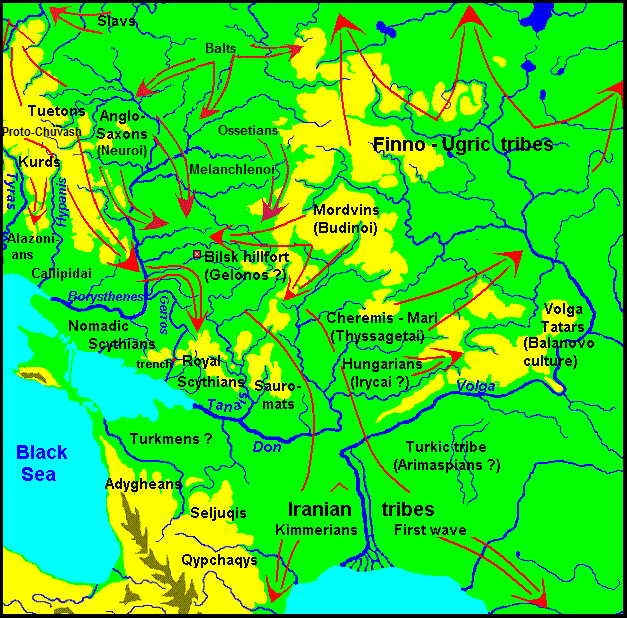
Map 10. The directions of the migrations of ethnic groups in Eastern Europe at the end ІІ-го – the beginning І mill. BC.
Moving from West Ukraine to the east and south-east, the Proto-Chuvashes during the 1st mill BC gradually settled the steppe part of the left banks of the Dnieper/ Here they entered long and close contact with the Magyars, as evidenced by the numerous lexical matches of the Chuvash and Hungarian languages. Staying in Pontic steppes for a few centuries, the Proto-Chuvashes created a culture of a high level which is known as the Scythian. They established and maintained contacts with the agricultural centers of Asia Minor and the Balkans but created their own culture on a local basis.
Since the beginning of the III. BC. sites of the Scythian steppe culture are absent, a testament to its decline or even ruin (SIMONENKO O.V. 1994, 32). Some scientists see the reason for this in the invasion of the Sarmatians and refer to Diodorus Siculus, according to whom the Sarmatians, coming from the Don country, devastated a large part of Scythia and established their rule over it. Archaeological findings evidence in favor of this invasion which was resulted in the loss of the dominant position of "Royal Scythians", described by Herodotus, at the beginning of the IV century BC (SULIMIRSKIY T. 2008 – in Russian – Changes in the ancient Scythia). Retreating from the Sarmatians, the Scythians had left vast areas of Azov coast, although a deal of them stayed on the banks of the Lower Dnieper, "where a half dozen settlements were arisen such as Zolota Balka, Znamenka, Liubymivka others moved to the Crimea, where they formed the Scythian Kingdom, or Scythia Minor with its capital in Naples” (BARAN V.D., 1985: 5). However, other experts say that Diodorus events are not dated and generally he wrote about Sauromatians, not Sarmatians, and believe that the Sarmatians appeared in the Northern Black Sea until the end of the II millennium BC. (SIMONENKO O.V. 1994, 34). Accordingly, there is doubt that the Sarmatians have been responsible for the decline of the "Great Scythia":
Final Great Scythia and the resettlement of the Sarmatians to the northern Black Sea are separated by a century gap, which does not allow connecting these two events (POLIN S.V., SIMONENKO A.V. 2004: 372).
It is still difficult to talk about the ethnic composition of the population of the Northern Black Sea region at the time when the Goths came here. Maybe they didn’t find the Scythians but revealed their traces in place names. Jordanes, in his "Getica" rather scanty, described the coming of the Goths for a new place of settlement, but it does have such evidence:
But when the volume of the people increased greatly and Filimer, son of Gadaric, reigned as king -about the fifth since Berig – he decided that the army of the Goths with their families should move from that region. In search of suitable homes and pleasant places they came to the land of Scythia, called Ojom (Oium) in that tongue (JORDANES. 1960: 25).
Namely, by which language was named the land, it is not clear from the context – Scythian or Gothic. Jordanes commentators believe that Oium is a Germanic word (supposedly Gothic *ajum akin to Ger Aue "valley, meadow" existed in the Gothic language). If we turn to the Chuvash language, we find the word uçam "area, place", which has matches in other Turkic languages (Turkm., Kirghiz., Yakut. orun, Tat. uryn, Kaz. oryn, etc.) Complex transformation Turkic r – j – ç corresponds to the phonological patterns of the Chuvash language (cf. Chuv ura "foot" – Turk. aja "foot", Chuv çĕr "hundred" – Turk juz "hundred"). However, perhaps the best way to decipher the name of Oium may be given by Chuv. ĕç "work" and um "a plot, lot". The Goths just could borrow uçam or ĕçum for the name of the area where they settled. The possibility of Gothic-Proto=Chuvash language contacts in the 2nd century AD on the territory of the Northern Black Sea Coast follows from such words of Jordanes:
Farther away and above the Black Sea are the abodes of the Bulgar, well known from the wrongs done to them because of our sins (Ibid: 37).
It should be noted here that Jordanes is to blame for the historical misunderstanding that the Bulgar people never existed. Jordanes uses this word only once, not mentioning the Bulgars in the list of peoples conquered by the Gothic king Hermanarich. This was the name of the ruling dynasty of the tribal union, which consisted of Anglo-Saxons, while the Protochuvashes were subordinate to them. It was they who called the Anglo-Saxons this way when they first met them: Chuv. pulkk 1. "flock, herd"; 2. "crowd, gang, flock" and ar "man". The Protochuvashes could not call themselves this way. (see Volga Bulgars).
The main archaeological sites of the second quarter of the 1st millennium AD in Ukraine.
(BARAN V.D. (Ed.). 1985: 78).
Legend: a – settlements and b – grave fields of Cherniachiv culture connected with the Goths, c – settlements and d – grave fields of Kyiv culture, f settlements and g – grave fields of Wielbark culture, also connected with the Goths, h – settlements and i – grave fields of Carpathian Tumuli culture, Ojum – the center of Oium, connected with the city of Izium.
Judging from the context, the area Oium was on the Left Bank of the Dnieper. This area can be associated with the city of Izium (see map above), whose name is phonetically similar to Chuv. uçam, as ĕçum. In later sources, the Goths, as well as Proto-Chuvashes, were often referred to as the Scythians by the name of the country they inhabited:
Das Reich der Skythen, die einst Herodot beschrieben hat, war länger aus den Steppen am Nordufer des Schwarzen Meers verschwunden. Dennoch betrachteten die Bizantiener noch ein Jahrtausend nach dem Klassiker der Geographie die Bewohner der Länder jenseits des „Pontos Euxines“ als Skyten (POHL WALTER. 2002: 22)


